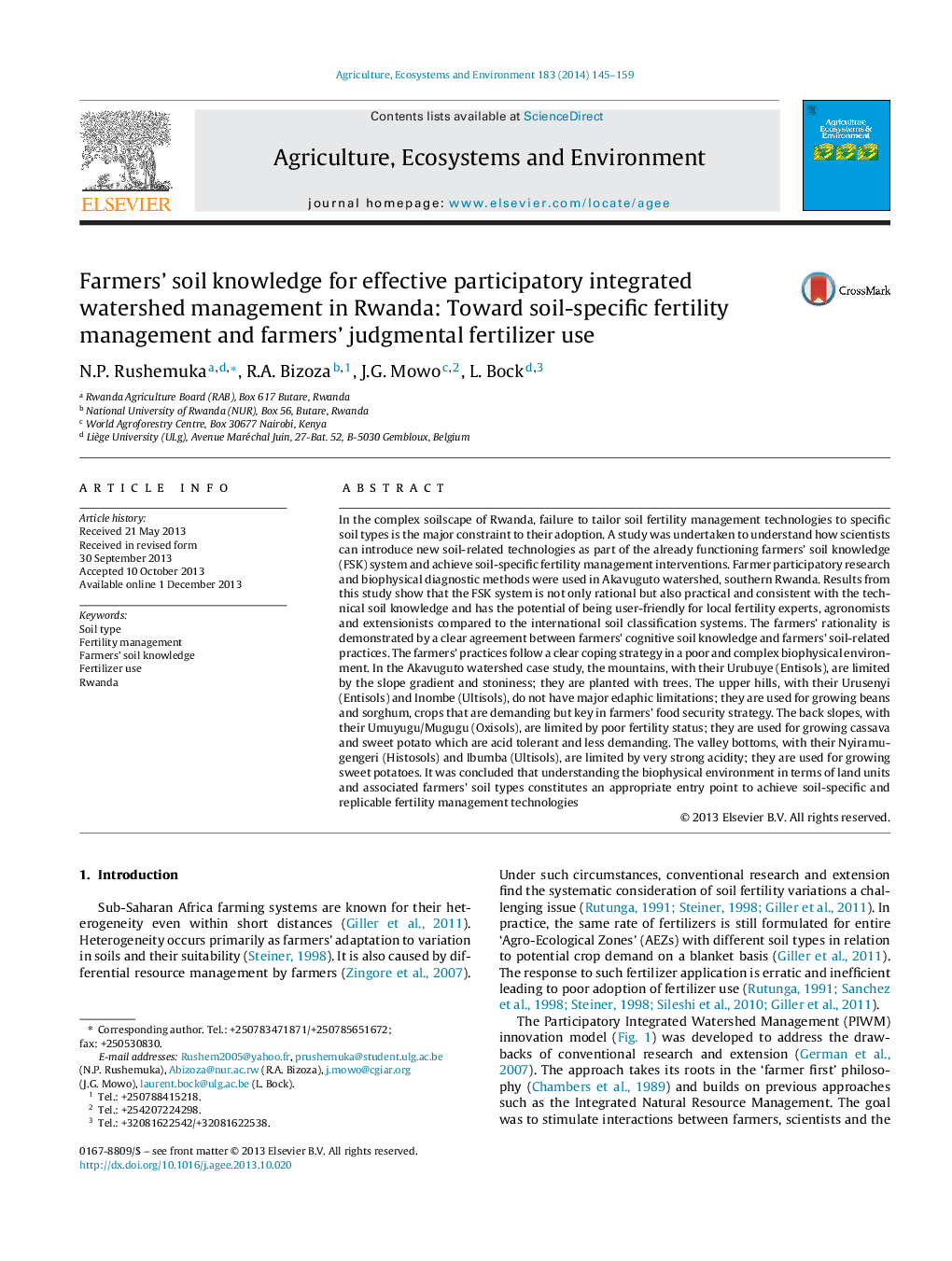| کد مقاله | کد نشریه | سال انتشار | مقاله انگلیسی | نسخه تمام متن |
|---|---|---|---|---|
| 2414175 | 1552069 | 2014 | 15 صفحه PDF | دانلود رایگان |
• Farmers’ soil nomenclature is a basic element to understand farmers’ rationality.
• Farmers distribute crops to soil types selectively.
• Understanding farmers’ rationality is a prerequisite for any advisory service.
• Chemical soil properties are essential to understand farmers’ rationality.
In the complex soilscape of Rwanda, failure to tailor soil fertility management technologies to specific soil types is the major constraint to their adoption. A study was undertaken to understand how scientists can introduce new soil-related technologies as part of the already functioning farmers’ soil knowledge (FSK) system and achieve soil-specific fertility management interventions. Farmer participatory research and biophysical diagnostic methods were used in Akavuguto watershed, southern Rwanda. Results from this study show that the FSK system is not only rational but also practical and consistent with the technical soil knowledge and has the potential of being user-friendly for local fertility experts, agronomists and extensionists compared to the international soil classification systems. The farmers’ rationality is demonstrated by a clear agreement between farmers’ cognitive soil knowledge and farmers’ soil-related practices. The farmers’ practices follow a clear coping strategy in a poor and complex biophysical environment. In the Akavuguto watershed case study, the mountains, with their Urubuye (Entisols), are limited by the slope gradient and stoniness; they are planted with trees. The upper hills, with their Urusenyi (Entisols) and Inombe (Ultisols), do not have major edaphic limitations; they are used for growing beans and sorghum, crops that are demanding but key in farmers’ food security strategy. The back slopes, with their Umuyugu/Mugugu (Oxisols), are limited by poor fertility status; they are used for growing cassava and sweet potato which are acid tolerant and less demanding. The valley bottoms, with their Nyiramugengeri (Histosols) and Ibumba (Ultisols), are limited by very strong acidity; they are used for growing sweet potatoes. It was concluded that understanding the biophysical environment in terms of land units and associated farmers’ soil types constitutes an appropriate entry point to achieve soil-specific and replicable fertility management technologies
Journal: Agriculture, Ecosystems & Environment - Volume 183, 15 January 2014, Pages 145–159
